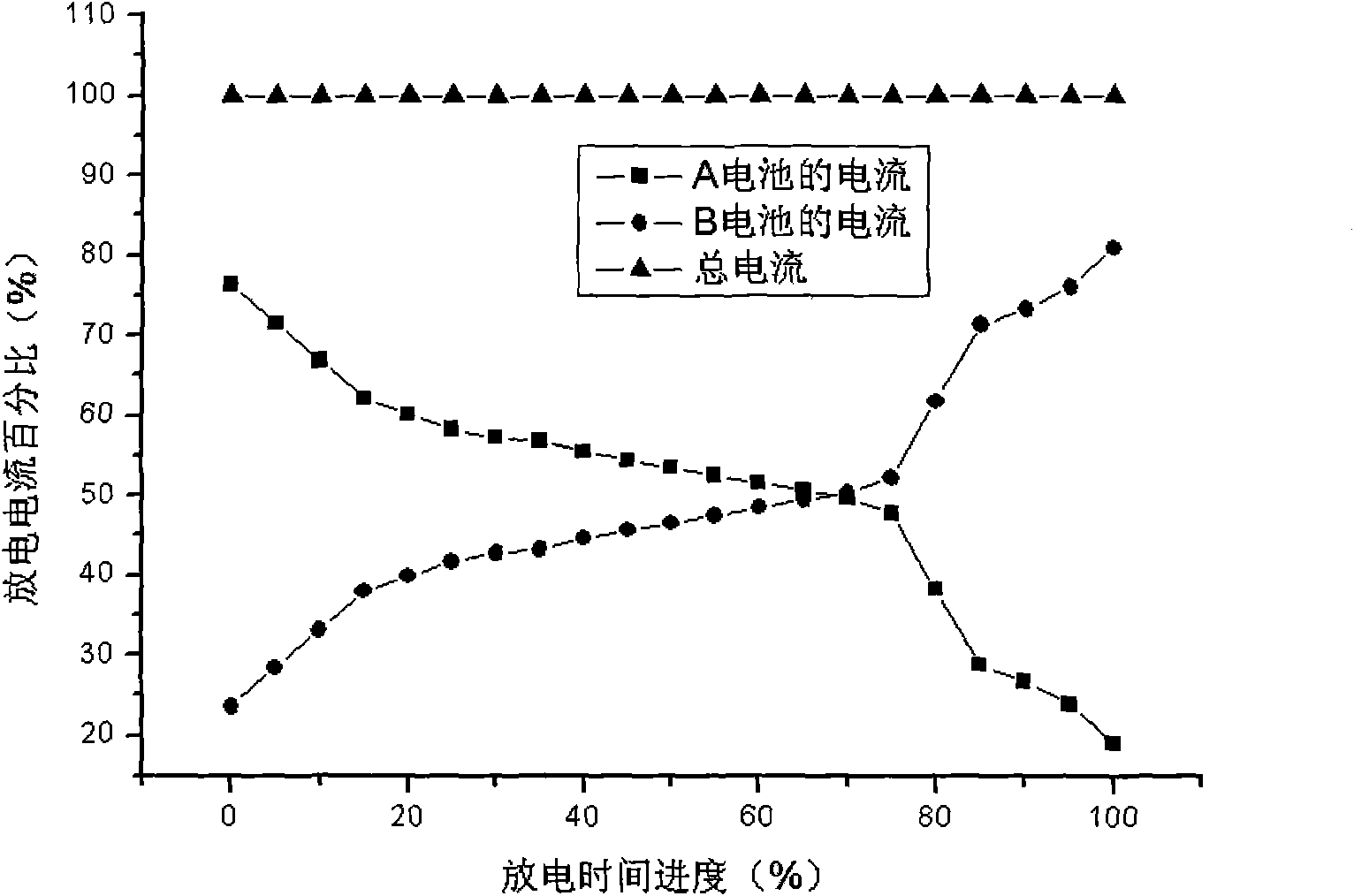Charging and discharging method of lithium secondary battery
A lithium secondary battery, battery voltage technology, applied in secondary battery charging/discharging, secondary battery repair/maintenance, etc., can solve problems such as poor cycle performance, uneven distribution of battery current density, and battery heating
- Summary
- Abstract
- Description
- Claims
- Application Information
AI Technical Summary
Problems solved by technology
Method used
Image
Examples
Embodiment 1
[0075] According to the above-mentioned multi-stage constant voltage charging method for lithium secondary batteries, the specific charging steps of 108 strings of 345.6V, 40Ah lithium ferrous phosphate battery packs for hybrid vehicles are as follows:
[0076] Step 1: Charge with 40A current for 3 minutes;
[0077] Step 2: Use a constant charging voltage of 372.6V, a current limit of 120A, set a constant voltage charging cut-off current of 40A, and a constant voltage charging time of 3 minutes for constant charging voltage and current limiting charging;
[0078] Step 3: When charging at 372.6V constant voltage, the current is less than 40A or the constant voltage charging time is longer than 3 minutes, that is, the voltage of the corresponding single battery is 3.45V, and the state of charge is about 60%, then charge with a current of 120A to The voltage of the battery pack reaches 378V;
[0079] Step 4: When the voltage of the battery pack reaches 378V, use a constant charg...
Embodiment 2
[0083] According to the above-mentioned multi-stage constant voltage charging method for lithium secondary batteries, the specific charging steps of 78 strings of 288V, 100Ah lithium manganate battery packs for pure electric vehicles are as follows:
[0084] Step 1: Use a constant charging voltage of 304.2V, a current limit of 20A, set a constant voltage charging cut-off current of 5A, and a constant voltage charging time of 30 minutes for constant charging voltage and current limiting charging;
[0085] Step 2: When charging at 304.2V constant voltage, the current is less than 5A or the constant voltage charging time is longer than 30 minutes, that is, the voltage of the corresponding single battery is 3.90V, and the state of charge is about 35%, and then the constant charging voltage is 312V. The current limit is 50A, the constant voltage charging cut-off current is set to 12.5A, and the constant voltage charging time is 30 minutes for constant charging voltage and current li...
Embodiment 3
[0091] According to the above-mentioned multi-stage constant voltage charging method for lithium secondary batteries, the specific details of 320 series of 768V, 4000Ah lithium titanate battery packs (rated charging and discharging current is 650A) for an energy storage power station with a rated charging and discharging power of 500kW The charging steps are:
[0092] Step 1: Charge with 200kW charging power (260A current) until the battery pack voltage reaches 694.4V;
[0093] Step 2: When the voltage of the battery pack reaches 694.4V, use a constant charging voltage of 761.6V, a current limit of 650A (charging power of 500kW), set the constant voltage charging cut-off current to 260A, and constant voltage charging time to 30 minutes. Constant charging voltage and current limiting charging;
[0094] Step 3: When charging at 761.6V constant voltage, the current is less than 260A or the constant voltage charging time is longer than 30 minutes, then use constant charging volta...
PUM
 Login to View More
Login to View More Abstract
Description
Claims
Application Information
 Login to View More
Login to View More - R&D
- Intellectual Property
- Life Sciences
- Materials
- Tech Scout
- Unparalleled Data Quality
- Higher Quality Content
- 60% Fewer Hallucinations
Browse by: Latest US Patents, China's latest patents, Technical Efficacy Thesaurus, Application Domain, Technology Topic, Popular Technical Reports.
© 2025 PatSnap. All rights reserved.Legal|Privacy policy|Modern Slavery Act Transparency Statement|Sitemap|About US| Contact US: help@patsnap.com



